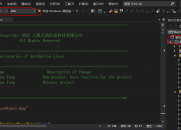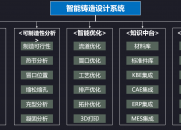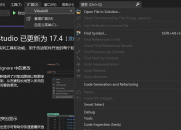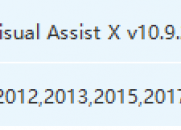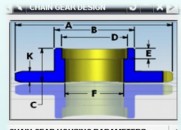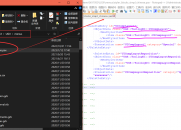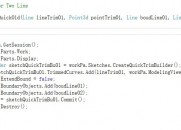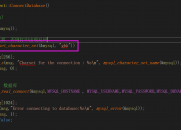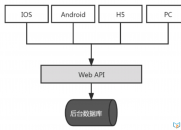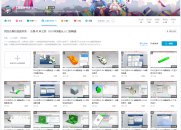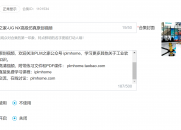请使用QQ关联注册PLM之家,学习更多关于内容,更多精彩原创视频供你学习!
您需要 登录 才可以下载或查看,没有账号?注册

x
The examples show how to access the following relationships:
: c! B8 ~( H8 a) qNX session → list of parts part → list of solid bodies solid body → list of faces solid body → list of edges face → list of associated edges face → solid body edge → list of associated faces edge → solid body
8 E" ?8 b; p* [: ^( I5 m0 L, U
5 Y& K& h/ Y. O f& r. n; Y M
Bodies, Faces and Edges - Language Specific Details
: l* Z0 F% o- [7 rNX Open for C++ NX Open for .NET NX Open for Java ! G2 T6 X2 S( Z
+ F0 ~+ j! L( v, k) \6 T& U
NX Open for C++
4 ]8 t2 T' J" {# o; V2 ~: A; f' Y3 q" S1 K: \2 A0 R
0 Y3 S# w J5 P4 k1 h* _1 }
NX session → list of parts! {- D. z% x; s
To access all parts in an NX session, use the Parts property to access the Part Collection. Then use the collection's iterator to access each part. Session *NXSession = Session::GetSession(); ParTCollection *partList = NXSession->Parts(); PartCollection::iterator itr; for ( itr = partList->begin(); itr != partList->end(); ++itr ) { processPart(*itr); }. l7 f( P4 Y( q* v) g& G8 }
% f, b8 G* D5 v, G- J6 {part → list of solid bodies( V" R. v8 L4 T
To access all solid bodies in a part, use the Bodies property to access the Body Collection. Then use the collection's iterator to access each body. void processPart(Part *partObject){ BodyCollection *bodyList = partObject->Bodies(); BodyCollection::iterator itr; for (itr = bodyList->begin(); itr != bodyList->end(); ++itr) { processBodyFaces(*itr); processBodyEdges(*itr); }}* a0 v3 t1 k' ?1 P' t- {' a
* ] c+ o7 v$ `4 rsolid body → list of faces) _3 Q5 w% G+ b/ k
To access the faces of a body use the GetFaces() method to return an array of faces. void processBodyEdges(Body *bodyObject){ std::vector <Edge *> edgeArray = bodyObject->GetEdges(); for (int inx = 0; inx < (int)edgeArray.size(); ++inx) { processEdge(edgeArray[inx]); }}
) Q, u: o" n( m4 E, g. W. Q
5 E5 D! c* r' u9 G1 v- O7 E8 Xsolid body → list of edges$ R0 Y3 D" f9 ?) t
To access the edges in a body use the GetEdges() method to return an array of edges. void processBodyEdges(Body *bodyObject){ std::vector <Edge *> edgeArray = bodyObject->GetEdges(); for (int inx = 0; inx < (int)edgeArray.size(); ++inx) { processEdge(edgeArray[inx]); }} & r4 R3 J! e/ e6 v0 G7 |
6 F. S: D* r# G7 W& \: _, }. Dface → list of associated edges
g# b( u8 t. F# L2 b/ j7 rface → solid body4 A- [2 u8 U! z* f. N
To access the edges for a face use the GetEdges() method to return an array of edges. To access the face's body use the GetBody() method. void processFace(Face *faceObject){ std::vector<Edge *> edgeArray = faceObject->GetEdges(); for (int inx = 0; inx < (int)edgeArray.size(); ++inx) { processEdge(edgeArray[inx]); } Body *bodyOfFace = faceObject->GetBody();}
& F' }* u, v! k7 Q/ a
% B' X0 W1 r* t' b' qedge → list of associated faces; k( e: d3 N5 Y& c7 \; y
edge → solid body0 d) j: I) Z$ x5 t* k
To access the faces associated with and edge use the GetFaces() method to return an array of faces. To access the edge's body use the GetBody() method. void processEdge(Edge *edgeObject){ std::vector<Face *> faceArray = edgeObject->GetFaces(); for (int inx = 0; inx < (int)faceArray.size(); ++inx) { processEdgeFace(faceArray[inx]); } Body *bodyOfEdge = edgeObject->GetBody();}
4 O8 v2 z# L- k; q1 }9 v! ^ | 

